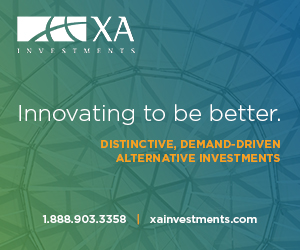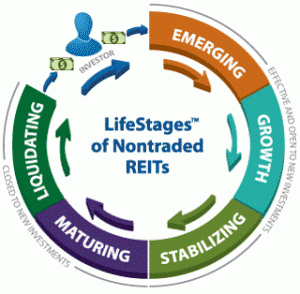David Bodamer | WealthManagement.com
The explosion of registered funds, continued tech developments, and the move by many big-name alternative asset managers into the wealth space fueled advisor adoption of private investments in 2024, and that trend seems likely to continue in 2025.
Much of the activity has come via the explosion of evergreen funds—including interval funds, business development companies, tender offer funds and non-traded REITs—that are open to accredited investors. Such structures typically boast lower minimum investments than traditional drawdown funds, offer limited liquidity options and simplified tax reporting (1099s instead of K-1s).
While that will continue in 2025, giving advisors yet more options to pick from, what has also begun to happen is taking those funds and integrating them into model portfolios and unified management accounts. That’s one area Lawrence Calcano, chairman and CEO of iCapital, one of the main alternative investment marketplace and tech platforms for advisors, is focused on as he looks forward to 2025.
Model portfolios give investors access to multiple funds and asset types at once. BlackRock and iCapital have begun to build these, giving advisors off-the-shelf options. In addition, now that the capability to build alts-centric model portfolios has been established, advisors can explore building their versions for clients.
That was just one of the themes that arose when WealthManagement.com interviewed Calcano about what he expects for alts in 2025.
This transcript has been edited for style, length and clarity.
WealthManagement.com: Before we look ahead, can you start by looking back to 2024 and what you saw from your seat as the big themes in advisors’ alts usage?
Lawrence Calcano: It feels like it was a year when we, as an industry, started to focus on the next wave of advisors who were interested in bringing clients into the asset class. I talk a lot about the adoption cycles in industries with a book called Crossing the Chasm by Geoffrey Moore. He outlines that in the life cycle of the adoption of anything, the earliest adopters are willing to put up with things that don’t work great. I think a lot of people who understand how alternatives can help client portfolios have been allocating for years and putting up with issues like capital calls and complicated subscription documents, etc. We have tried to make that easier and automated so clients can continue on their journey in a positive and efficient way.
In 2023 and 2024, we saw this new wave of advisors come in. This next wave of product users is not willing to put up with very much that is outside of how they like to work and how things should work. So, 2024 was about trying to find out how to meet people where they are and how they invest. What tools do they use? What structures do they use? How to make sure they could include alternatives in their regular work style so neither the advisor nor the client would have to adopt a whole new approach as they think about these new assets.
That was very evident this year, and it will pick up significantly next year. That includes things like the tools they use to add products to portfolios. For our part, partnerships with Morningstar and Envestnet are examples of putting alts into portfolio construction and proposal systems so they are being purposed with the rest of the portfolio so clients can understand how they fit from the start.
In terms of alts adoption, we also have two factors that people should understand. One is that it’s still a very low penetration rate, with about 20% to 25% of advisors accounting for 75% of alts volume. Secondly, even among advisors using alts, we have a fairly low allocation rate.
We expect and are seeing growth in both the participation rate and the allocation rate. With that, if you are talking about an allocation to alts that is 1% or 3%, you can go and add that to a portfolio, probably funding that from a cash balance. But once you start looking at 10% to 25% allocations—and if you look at CIOs at some large RIAs, that’s the ranges they are talking about—it becomes difficult to build, and you have to cycle out of other investments to fund that alts sleeve. That’s why integration into portfolio proposal tools is so important, so clients can build an alt allocation that makes sense.
WM: Along with that, you’ve talked about putting alternatives into custom models and UMAs, including the partnership announced with GeoWealth and BlackRock earlier this year. Can you talk about why that’s significant?
LC: The ability to put model portfolios into UMAs makes it easier for advisors to bring products to clients. Historically, people have not had the ability to invest in alternatives through a model portfolio. They’ve invested directly in different products.
There’s been product innovation as well in 2024 as the asset manager community wants to make these products more available more broadly to qualified purchasers, qualified clients and accredited investors. One of the important things is if you look at the investment world, so much of what happens is automated. The way we buy and sell stocks, ETFs and mutual funds features significant automation. To me, that’s an important element of what continues to need to evolve to make this asset class hospitable. You must have the right products, but you also have to have the right experience for advisors.
I think a lot of advisors are looking for an “easy button.” But that’s a dangerous expression. It doesn’t mean that they don’t still need to understand the constituent parts and what role a specific model might play in a portfolio. So, I want to keep everything in that context.
As this market grows and more advisors enter, it’s as essential as ever that people are educated in what they are doing. Meeting advisors where they are includes understanding their level of experience with this asset class and making sure that advisors newer to it have significant resources available, including compliance capabilities, certifications and testing. The education piece is going to be an important element for many years to come.
Within that, the building blocks of these models will make it easier for people to adopt because it’s just how they build portfolios today. And it’s not just about the model, i.e., “Here’s a model for you invest in.” People are going to want to build their own models. As firms—wirehouses, IBDs and independents—get larger and in-source more investment capabilities, they are going to want to build their own models.
For us, introducing the first set of models was also about unpacking the technology that allows you to build those models in the first place. We launched several, including a multi-asset model and growth model and are about to launch an income model. But the tech is separate, and lots of clients will be able to choose their own models or layout different sets of allocations.
The second building block is how these models fit into portfolios and into UMAs. With our partnership with BlackRock, we will allocate and create an alts sleeve and rebalance it as required. We will be using registered products that have some liquidity features that give some ability to rebalance and report on products that got into the overall model with GeoWealth that will report on an ongoing basis. We are very active in helping to manage alts in UMAs for many partners, and that’s an important piece of making the asset class very hospitable for advisors.
WM: Another thing that’s been notable is seeing how aggressively alternative asset managers that historically focused on institutions or ultra-high-net-worth investors are looking to the wealth segment as their best growth opportunity. Do you think we will see more managers move into the wealth space?
LC: If you are in any market, you want to be able to participate in the biggest growth elements to continue to build your business. I don’t think that’s unique to asset managers, either, at this point. But we will continue to see the asset management community try to figure out the right product mix for clients to serve them.
If you are a manager who doesn’t have alts capabilities, you are going to be thinking about acquiring or partnering so you can provide a solution to the industry. What I’m assuming is a lot of traditional asset managers are looking at where their capabilities are and where they can add value to the equation. A lot of traditional asset managers have distribution teams and penetration into the advisor market and thinking about how to leverage those relationships and bring more product that is of interest in those extant relationships. That’s where we see a lot of M&A or partnerships to create solutions.
On the alts side, a lot of asset managers are also thinking about how we are getting products into portfolios. We’ve tried to address that with Architect. It helps advisors understand if you add specific groups of products including private equity, private debt, infrastructure, real estate, hedge funds, structured notes, etc., how does that help get clients closer or further from their goals?
WM: Speaking of asset types, we’ve certainly seen a lot of emphasis on private credit in recent years. Do you expect that to continue? And what about the other major asset classes?
LC: Since 2022, private credit flows have been quite significant on our platform. Roughly 44% of flows this year have been in private credit vs. the mid-30% range for private equity. That’s a reversal of what we have seen over time and a significant increase in private credit allocations.
It stems from a set of economic factors, some of which will remain in place in 2025. But if you start in 2022, economic concerns arose, and a “risk-off” investment mentality emerged. People went for shorter durations, and private credit is shorter than private equity.
Also, we were looking at a rising rate environment at that time. Therefore, private credit, the majority of which is floating rate, provided a great hedge. In addition, as rates got to around 5%, absolute returns on private credit reached the 10% to 12% range, depending on the strategy.
But in the third quarter of this year, we saw private equity in the mid-40% allocation and private credit in the low 30s. We saw things flip.
If you look forward to 2025, the prospect is that there will be a handful of more rate cuts. We don’t expect them to be on a prolonged cutting cycle. You might see rates continue to stay in the 3% to 4% range, and therefore, private credit—with a floating rate exposure—should continue to be a relatively attractive asset class for people.
In addition, as rates have come down, interest rate coverage ratios are also improving. Companies that borrow money at lower rates will have better coverage, so credit quality has improved. So, while private equity in the market, we anticipate, will continue to be quite attractive, private credit will remain attractive as well.
WM: Are there any emergent alternative asset classes you have an eye on?
LC: We haven’t seen a huge call for crypto yet in the advisor population. Personally, I feel the use case of crypto is still “to be determined.” When it first came out, people thought it would be a medium of exchange. That turned out not to be the case. Then, they thought it would be a hedge. But when markets went south, crypto seemed very correlated.
The Trump administration seems receptive and supportive of digital currencies. But as of today, there is still a very speculative nature to crypto. And a lot of advisors are not making huge allocations into more speculative assets. That doesn’t mean there can’t be some activity around the edges, but I don’t think it represents a core or important allocation.
WM: We’ve heard some rumblings about royalties. Is that something you have available on your marketplace?
LC: We do have several strong managers, whether those are music royalties or pharmaceutical royalties or others. They can provide income-oriented characteristics. In the context of our platform and giving people choices, that’s not only getting a diversified portfolio by going into alts, but being diversified in an asset class like credit and royalties can be diversifying in terms of an alternative credit portfolio.
WM: Lastly, can you talk about iCapital’s evolution alongside these trends you’ve outlined?
LC: When we first started, people liked to say we were “disruptive.” That’s how people describe tech. And I would politely correct people and say that we were not being disruptive. We are enabling. What we are building is enabling what a lot of people would like to do at scale.
We’ve been partnering with players to deliver alts in a more seamless fashion. With partnerships like the ones with Morningstar, Envestnet, GeoWealth and Schwab, we are focused on leveraging distributed ledger technology, whether you’re dealing with registered private funds, feeder structures, etc. We want to ease the stricture throughout the life of these investments.
Ultimately, we want to make it easier to learn about, invest in and own alternatives over their life cycles, which can be quite long. That’s been a big part of our investment in technology and the data infrastructure that’s needed to create a more friction-free experience. You will see more from us on distributed ledger technology and a lot more from us on data and data management. In general, this will address how we lower the cost of these assets and make investing in alternatives as easy as it is for ETFs or mutual funds.











